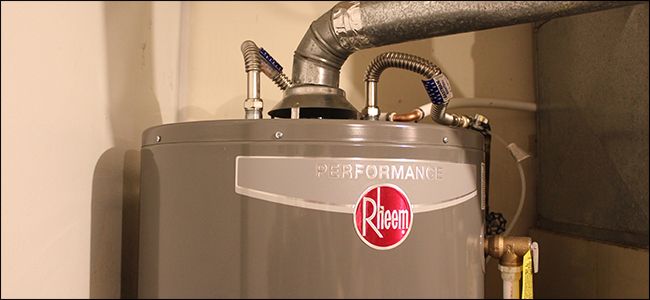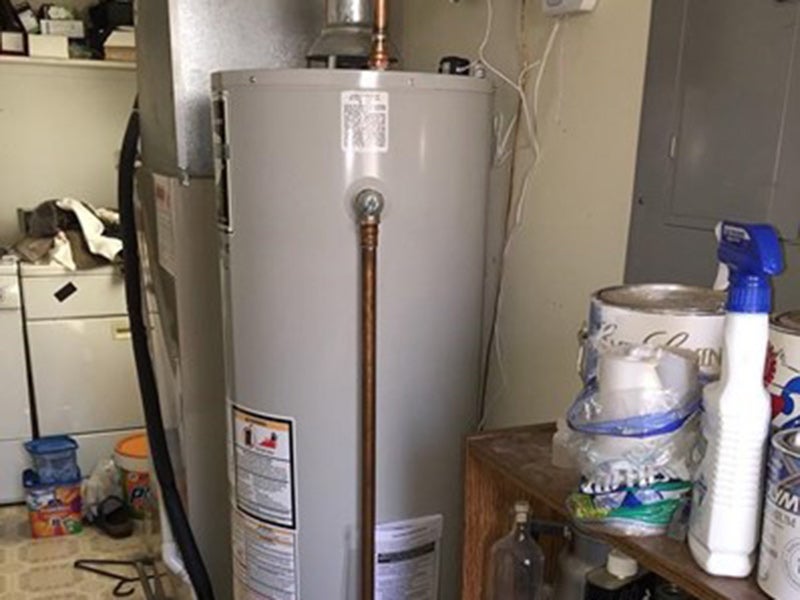Steps to Properly Maintain Your Home's Hot Water SystemMaking Sure Durability of Your Home's Hot Water System: Care Tips
Steps to Properly Maintain Your Home's Hot Water SystemMaking Sure Durability of Your Home's Hot Water System: Care Tips
Blog Article
This great article on the next paragraphs relating to Water Heater Maintenance Tips You Can't Afford to Forget is definitely informative. Check it out for yourself and figure out what you think of it.

Hot water is necessary for daily convenience, whether it's for a refreshing shower or washing recipes. To ensure your hot water system runs successfully and lasts longer, routine upkeep is essential. This post gives sensible tips and understandings on just how to maintain your home's hot water system to prevent disturbances and costly repair work.
Introduction
Preserving your home's warm water system might seem overwhelming, yet with a few easy actions, you can ensure it runs smoothly for years ahead. This guide covers whatever from recognizing your warm water system to do it yourself maintenance ideas and recognizing when to call professional help.
Importance of Preserving Your Warm Water System
Normal maintenance not just extends the life expectancy of your hot water system however likewise guarantees it runs successfully. Neglecting maintenance can result in reduced effectiveness, greater power costs, and also early failing of the system.
Indications Your Hot Water System Demands Upkeep
Recognizing when your warm water system requires focus can protect against significant concerns. Keep an eye out for indicators such as irregular water temperature level, weird sounds from the heating system, or corroded water.
Understanding Your Warm Water System
Before diving into upkeep jobs, it's handy to recognize the standard elements of your warm water system. Normally, this includes the water heater itself, pipes, anode rods, and temperature level controls.
Month-to-month Upkeep Tasks
Normal regular monthly checks can assist catch minor issues before they rise.
Purging the Hot Water Heater
Purging your water heater eliminates sediment build-up, boosting performance and lengthening its life.
Checking and Replacing Anode Rods
Anode rods prevent corrosion inside the tank. Evaluating and replacing them when worn is vital.
Inspecting and Readjusting Temperature Level Setups
Adjusting the temperature setups ensures optimal efficiency and safety.
DIY Tips for Maintenance
You can execute several maintenance tasks on your own to keep your hot water system in top problem.
Looking for Leakages
On a regular basis examine pipes and connections for leaks, as these can lead to water damages and greater costs.
Evaluating Pressure Relief Valves
Examining the stress safety valve guarantees it operates correctly and prevents excessive stress build-up.
Insulating Pipes
Shielding warm water pipelines decreases warmth loss and can save energy.
When to Call a Professional
While do it yourself upkeep is helpful, some problems require specialist proficiency.
Complex Concerns Needing Professional Help
Instances include major leakages, electric problems, or if your hot water heater is continually underperforming.
Regular Professional Upkeep Advantages
Specialist maintenance can include comprehensive assessments, tune-ups, and ensuring conformity with safety standards.
Verdict
Normal maintenance of your home's warm water system is vital for performance, durability, and cost financial savings. By following these pointers and understanding when to seek expert aid, you can make certain a trustworthy supply of hot water without unanticipated interruptions.
Water Heater Maintenance: The Basics
Maintaining your water heater will ensure it operates efficiently and has a longer lifespan. Neglecting regular maintenance can lead to costly repairs and an even bigger chunk of your savings if you have to replace it sooner than necessary. But there’s good news: Most water heater maintenance tasks are relatively simple and easy for homeowners with basic DIY skills.
Flush the Water Heater
Over time, sediment and minerals can build up in the tank, reducing its efficiency and potentially causing damage. To flush the tank, turn off the power or gas supply, attach a hose to the drain valve near the bottom and open the valve to drain the water until it runs clear. Ideally, flush the tank annually.
Replace the Anode Rod
The anode rod is a sacrificial metal rod that helps prevent corrosion inside the tank. Inspect and replace it every three to five years or per the manufacturer's recommendation. To replace the anode rod, turn off the power or gas supply, drain a few gallons of water from the tank, unscrew the old rod and replace it with a new one. If the anode rod is significantly corroded or covered in calcium buildup, it's a sign the water heater may need to be replaced soon.
Tune-Up
A yearly tune-up can help identify potential issues and ensure your water heater operates at peak efficiency. This typically involves checking the thermostat, burner assembly (for gas heaters) and any other components specified by the manufacturer. During a tune-up, the technician may also clean the burner and adjust the pilot light (for gas heaters) or examine the heating elements (for electric heaters).
How to Maintain Your Water Heater
Insulate the tank. Insulating the tank can improve energy efficiency and reduce heat loss, saving you money on energy bills. You can purchase precut insulation blankets designed specifically for water heaters or use standard fiberglass insulation wrapped securely around the tank. Check the temperature. The recommended water temperature for most households is around 120 degrees Fahrenheit (49 degrees Celsius). Higher temperatures can increase energy costs and potentially cause scalding. Use a kitchen thermometer to check the temperature at the faucet nearest the water heater. Monitor water pressure. Excessive water pressure can strain the water heater and cause leaks or even tank failure. Install a pressure-reducing valve if necessary. The ideal water pressure range is between 60 and 70 PSI (pounds per square inch). Test the temperature and pressure (T&P) relief valve. The T&P relief valve is a safety feature that releases pressure if the tank gets too hot or the pressure builds up too high. Test it annually by lifting the lever and allowing a small amount of water to release. Replace the valve if it doesn't release water or reseal properly. Check for leaks. Regularly inspect the tank, pipes and fittings for leaks or corrosion. Deal with issues promptly to prevent further damage. Even a small leak can lead to significant water damage over time. Consider a tankless water heater. If your traditional tank-style water heater is nearing the end of its lifespan ( typically 10 years), consider replacing it with a tankless water heater. These units heat water on demand, reducing standby energy losses and potentially saving you money on your energy bills. Schedule professional maintenance. While homeowners can perform many water heater maintenance tasks, it's still a good idea to schedule professional maintenance every few years. A plumber or HVAC technician can thoroughly inspect the unit, identify potential issues and ensure it operates safely and efficiently. https://www.homeserve.com/en-us/blog/home-improvement/hot-water-heater-maintanence/

I discovered that page on Water Heater Maintenance Tips You Can't Afford to Forget while doing a lookup on the search engines. Enjoyed reading our piece of writing? Please share it. Help somebody else check it out. I praise you for your time. Kindly come visit our site back soon.
Call Today Report this page